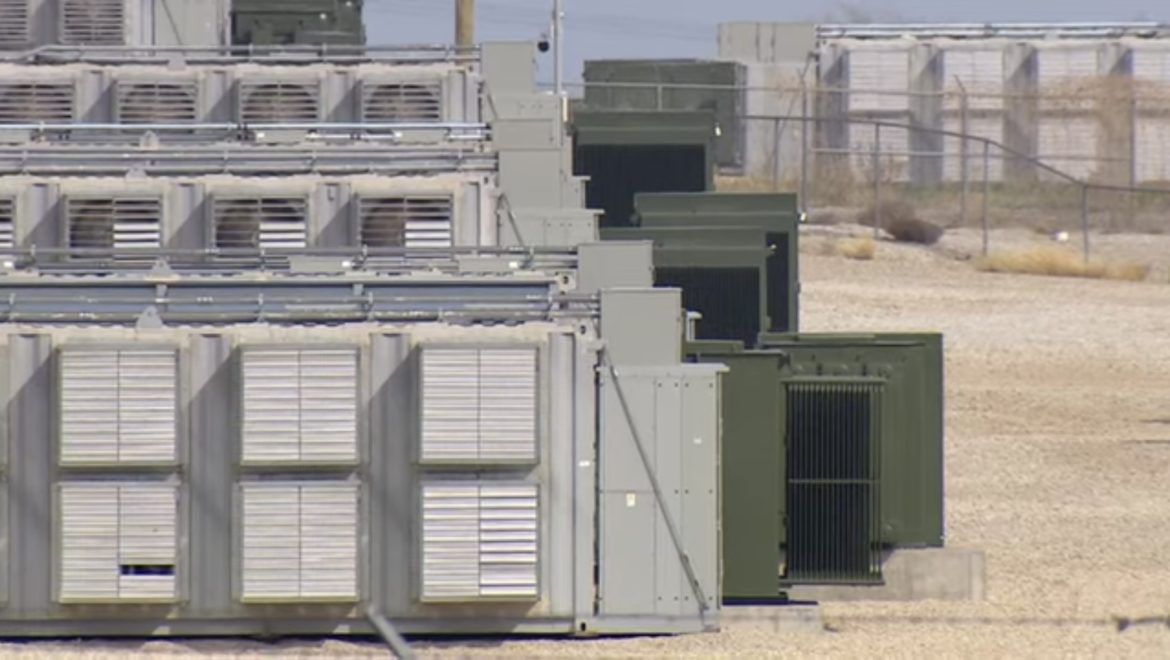U.S. technology giants are racing to secure energy assets from bitcoin miners as they expand their artificial intelligence (AI) and cloud computing data centers, leading to a fierce competition for a shrinking supply of electricity. The rapid growth of data centers, driven by AI advancements, is causing the fastest surge in U.S. power demand since the early 2000s. This surge is outpacing grid expansions, forcing companies like Amazon and Microsoft to scramble for electricity to power their operations.
Tech Companies vs. Bitcoin Miners for Power Resources
The scramble for power is shaking up the energy-intensive cryptocurrency mining industry. While some bitcoin miners are capitalizing on the demand by leasing or selling their power-connected infrastructure to tech firms, others are struggling to maintain the electricity access needed to stay in business. “The AI battle for dominance is being waged by the biggest and best-capitalized companies in the world, and they care like their lives depend on winning,” said Greg Beard, CEO of Stronghold Digital Mining. “Do they care about what they pay for power? Probably not.”
Data centers, which currently account for about 1% to 1.3% of global electricity consumption, could consume up to 9% of the total electricity generated in the U.S. by the end of the decade, according to the Electric Power Research Institute. In contrast, cryptocurrency mining uses around 0.4% of global electricity, a gap expected to widen as AI data centers expand.
Shifting Strategies Amid Growing Demand
Analysts predict that up to 20% of bitcoin miners’ power capacity could pivot to AI by 2027. Over the past year, bitcoin miners and AI data center owners have increasingly competed for the same power assets and contracts. For example, Marathon Digital Holdings, the world’s largest publicly traded bitcoin miner, expressed interest in a nuclear-powered data center owned by Talen Energy in Pennsylvania. However, Amazon ultimately acquired the center, securing enough electricity to power nearly all the homes in New Mexico.
Many large miners, including TeraWulf, are now shifting their strategies from exclusive cryptocurrency mining to marketing their land and energy services to AI and cloud computing businesses. “We’ve gotten a lot of interest from everyone, from an Amazon or Google,” said Kerri Langlais, chief strategy officer of TeraWulf. This trend accelerated in June when Core Scientific, a crypto miner fresh out of bankruptcy, announced a significant agreement to lease its power-connected facilities to CoreWeave, a company backed by Nvidia.
Challenges of Transitioning to AI Data Centers
Despite the potential financial gains, transitioning from bitcoin mining to AI data centers is not seamless. Most bitcoin mining facilities, built for speed and cost-efficiency, lack the sophisticated infrastructure required for AI or cloud computing, such as advanced cooling systems. “Most bitcoin miners that say they are going to do AI don’t really know what they’re getting into,” said Zach Bradford, CEO of CleanSpark. He added that his company would continue focusing on crypto mining as its core business.
Building an AI data center requires significant investment, often beyond the reach of many crypto miners. Following a 2022 bitcoin price crash, many miners struggled to access capital, making it challenging to fund the transition to AI. For example, EZ Blockchain had a 10-megawatt project planned with a South Carolina utility, but the utility later contracted for 100 megawatts with a hyperscaling AI company instead. “For them, it’s about speed to market, and they’re just throwing money around,” said Sergii Gerasymovych, CEO of EZ Blockchain.
As tech giants and bitcoin miners continue to vie for power resources, the competition underscores the growing importance of electricity in the digital economy. With the demand for AI capabilities only set to rise, the battle for energy is far from over.
Source: Reuters



